Humo (“smoke” in Spanish) is a grill restaurant that opened in February 2022. The main dining room is on the ground floor, with an open kitchen and flame grill to the right as you enter. There is a small bar at the far end of the dining room living room. The main restaurant can seat around forty guests. Downstairs via a spiral staircase is a sort of restaurant within a restaurant called Abajo, offering a tasting menu (currently £130) in a more intimate serving for up to ten guests. In this room, the diners sit around the central kitchen surrounded by wine cabinets. This was the experience that I had, and I have not tried the a la carte menu upstairs. The head chef of Humo is Miller Prada, who previously worked as a development chef at Sumi and was head chef of Endo at the Rotunda for three years. At the chef's table Abjo we encountered head chef Giacomo Tranquilli, who led the food service downstairs at Abajo. Mr Tranquilli previously worked as sous chef at the Four Seasons Dame de Pic.
There was a 10-bottle sake list in addition to the wine list. The wine list had 256 references, ranging in price from £36 to £1,800, with a median price of £99 and an average markup to retail price of 3.2 times. Examples were 2021 Sherazade Nero d’Avola, Donnafugata at £52 for a bottle that you can find in the high street for £18, Henschke Louis Eden Valley Semillon 2018 at £70 compared to its retail price of £27, and Bergström Willamette Valley Old Stones 2020 at £95 for a label that will set you back £36 in a shop. At the prestige end of the list, Gaja Alteni di Brassica Sauvignon Blanc 2019 was £280 compared to its retail price of £115, and Raveneau Chablis Foret 2018 was £950 for a wine that has a current market value of £454. It was nice to see a good selection of seventeen Rieslings on the list, such as the Georg Breuer Rüdesheim Estate 2021 at £69 compared to its shop price of £22.
The meal began with home-made focaccia topped with Sicilian Datterini tomatoes, and oregano. In place of a more traditional ham topping, there was tuna akami that had been cured and aged for up to 6 weeks. The focaccia had lovely texture and the tomato was excellent. The tuna had developed a texture not unlike ham and was quite salty. I just wonder whether it would actually have worked better to have the focaccia with ham. Anyhow, this was still a very nice canapé, with the bread itself excellent (15/20).
Next was a cluster of three dishes using octopus. Octopus skewer came with eel and chives on a potato flatbread. This worked well, the octopus being quite tender, the eel bringing an extra flavour and the potato flatbread an earthy base for the dish (15/20). Octopus head ragu with potato noodles, wakame (kelp) and Amalfi lemon was less successful. The ragu was rather dry and had quite limited flavour; perhaps more seasoning would have helped. I was also unclear whether the potato “noodles” really worked well. Something like the Pierre Koffmann squid tagliatelle dish with the squid disguised as pasta worked partly because the texture of the squid "pasta" actually does resemble pasta, not merely the appearance. In the case here, the potato noodles looked the part but otherwise had no resemblance to pasta, so it felt to me like a cheffy trick rather than something really interesting (13/20). This was followed by potato salad with cucumber and a kind of radicchio called Castelfranco (it has yellowish leaves with red freckles). This dish worked nicely as the sharp dressing worked well with the tender octopus, though in this case it was less clear that the potato was really needed (14/20).
At this point, we were presented with some ingredients to appear in the next stage of the meal. In particular, there was Hokkaido pumpkin, enoki mushrooms as well as ceps from a good supplier called Wild Room, and a fresh cheese made in-house with seaweed. These ingredients appeared as a quite pretty trio of cheese and pumpkin gnocchi with Parmesan sauce and a garnish of shaved Wiltshire winter truffles. The gnocchi itself was very good but, as ever, enoki mushrooms seem to be chosen for their pretty appearance rather than their bland flavour. The cheese itself was pleasant rather than anything special, but it is certainly interesting that the kitchen made its own (15/20). Cheese tempura used more of the cheese made in-house from raw milk and paired with 25 year-aged Balsamic vinegar. The balsamic was lovely and the dish worked quite well for me other than the batter of the tempura, which should have been crisp and golden but was not (15/20).
We then moved on to a seafood stage. Turbot had been aged for eight days and steamed, ”seasoned” with nori powder and served with a pool of consommé of onions that had been infused overnight. The fillet of turbot was tender but entirely lacked any discernible seasoning, and the dish was crying out for salt, or some lemon or both. It was a just flavourless slab of protein (12/20 is kind).
The stage was rescued by an accompanying skewer of turbot collar marinated and cooked on the barbecue with wagyu fat. This cut of turbot, from just behind the gills, has plenty of flavour and in this case, the skewer was nicely seasoned. This element was as if it had appeared from a different kitchen to the turbot (16/20).
We were then shown Anjou pigeon that had been coated in beeswax, a technique to seal in moisture. The pigeon breast was marinated and was made into a pithivier with a layer of cabbage inside the pithivier, as well as a mousse of lardo, foie gras marinated in white miso and whiskey. The slice of pithivier was served with a pool of cooking juices and pickled daikon wrapped around some pigeon meat. This was easily the dish of the meal and was a delight to eat. The pastry was delicate, the pigeon had lovely flavour and the cabbage balanced the richness of the foie gras. Classy cooking (17/20).
The dessert stage of the meal reverted back from the classical refinement of the pithivier into the current trend for vegetable-based desserts. Carrot ice cream and tonka bean crumble with honey yoghurt foam was dusted with matcha powder. The result had a rather powdery, chalky taste that may have xantham gum used to stabilise the foam. The texture was just disappointing to me (12/20). The final dessert was a carrot biscuit with tonka Chantilly, kumquat chutney and matcha cremosa. This was pleasant enough, the carrot biscuit decent and with the sharpness of the kumquat toned down by the creamy tonka beans, though I am not sure what the matcha really added (14/20).
Service was very good, led by assistant manager Tristan Cooper. I was being treated to this meal by a friend so I did not see the bill, but if you shared a modest bottle of wine then a total with service might come to around £190. Abajo offers an interesting experience in a smart, intimate setting, and although over a lengthy menu there is almost always some inconsistency, there was the genuine culinary high of the pigeon pithivier dish.



















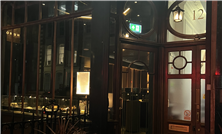

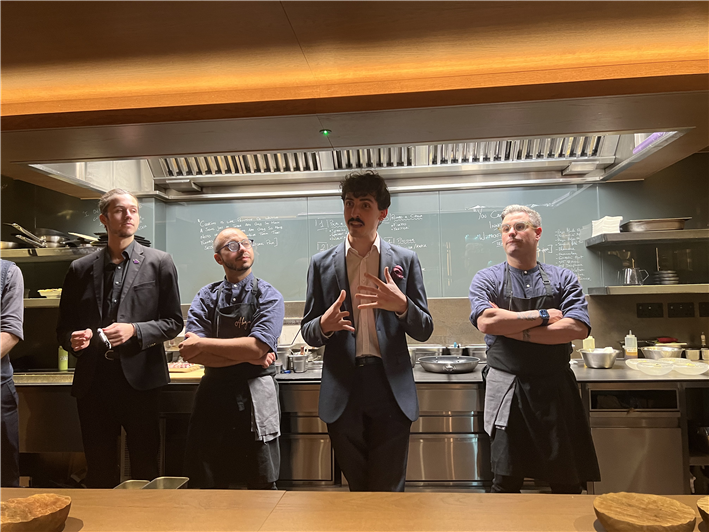
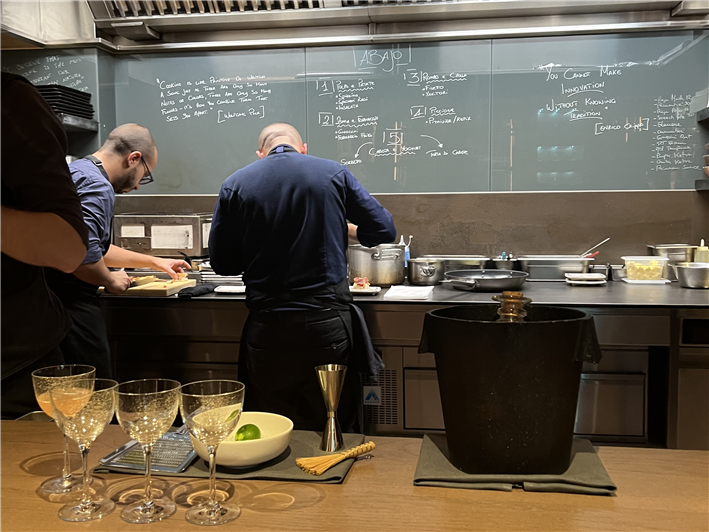
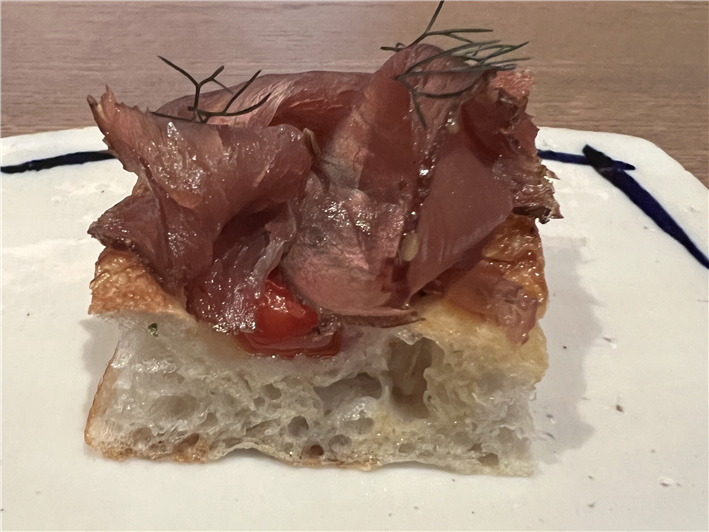
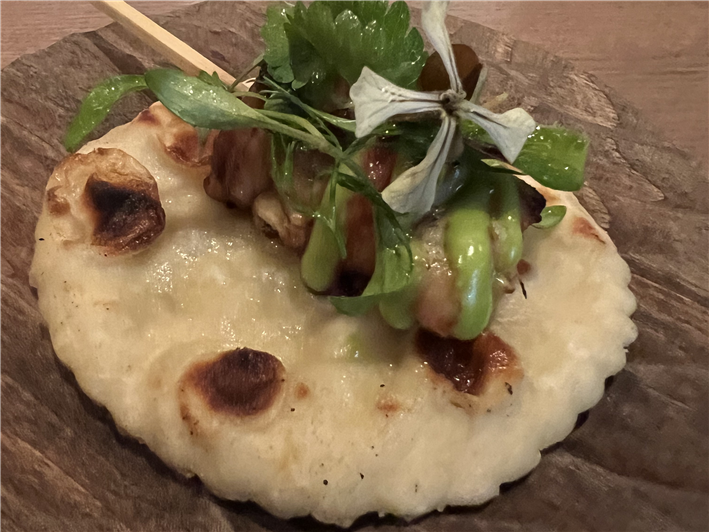
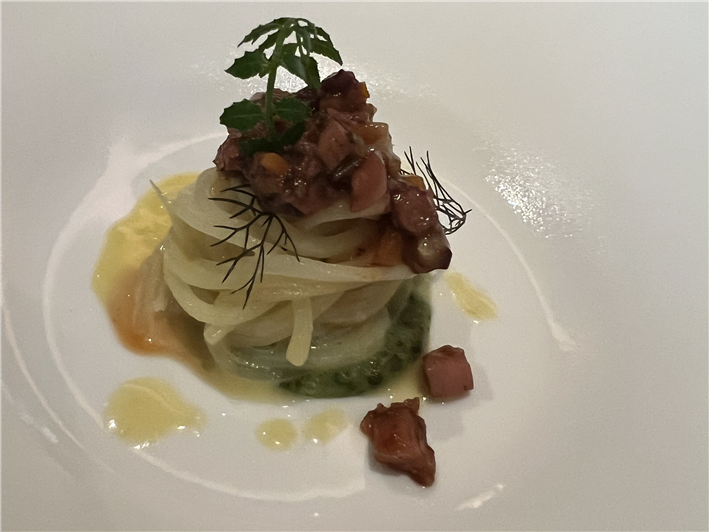

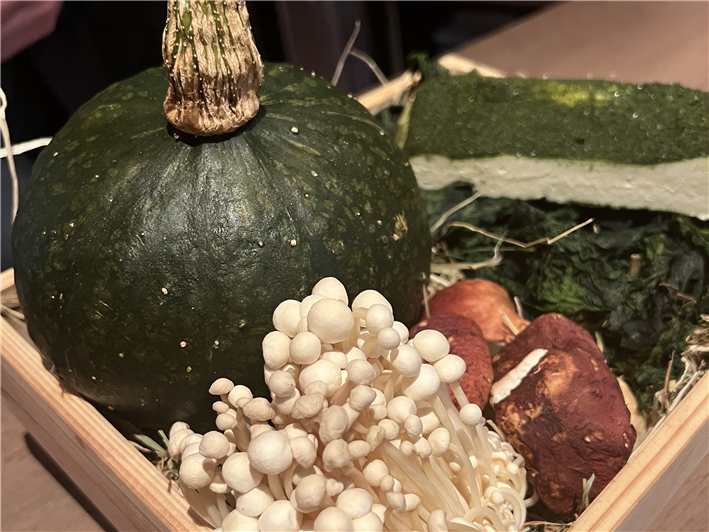
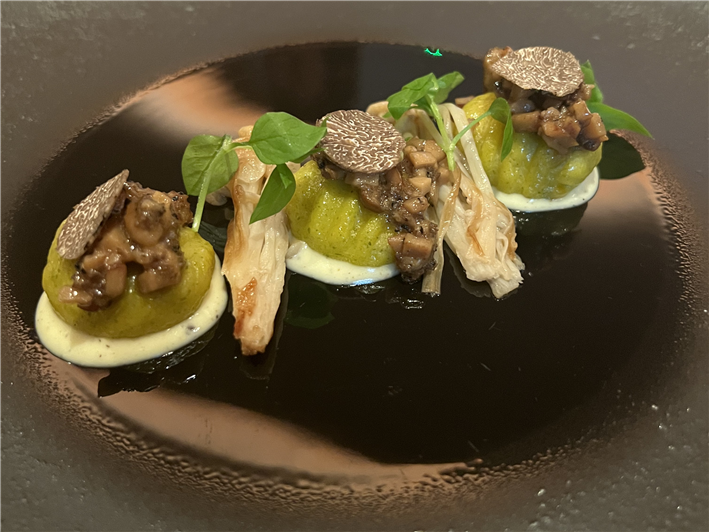
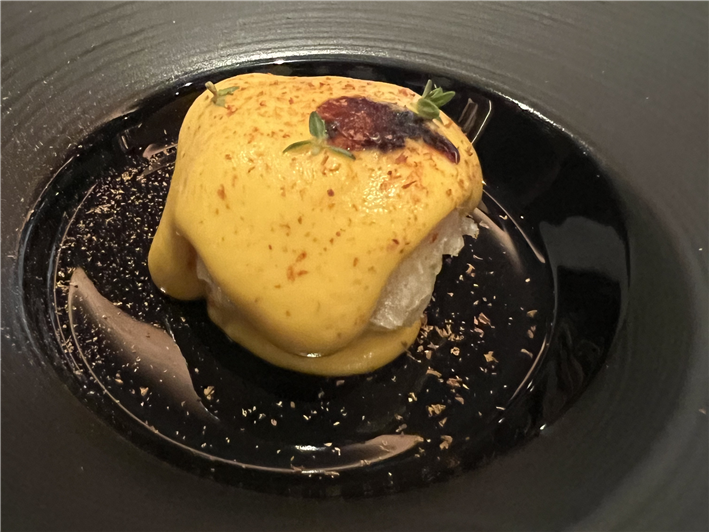
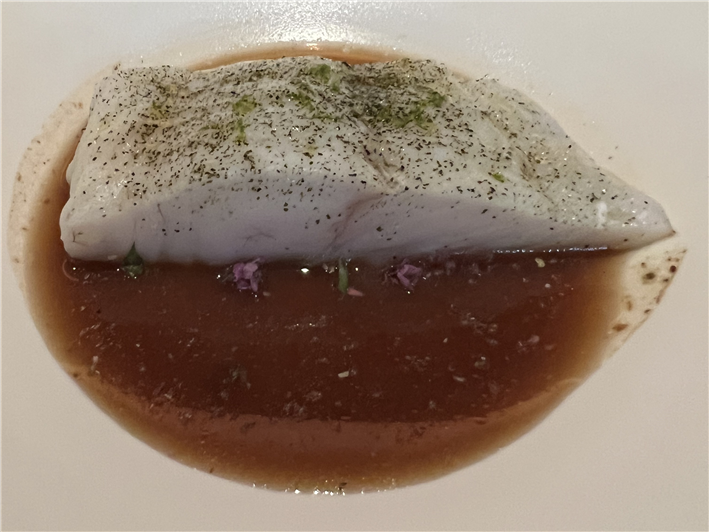
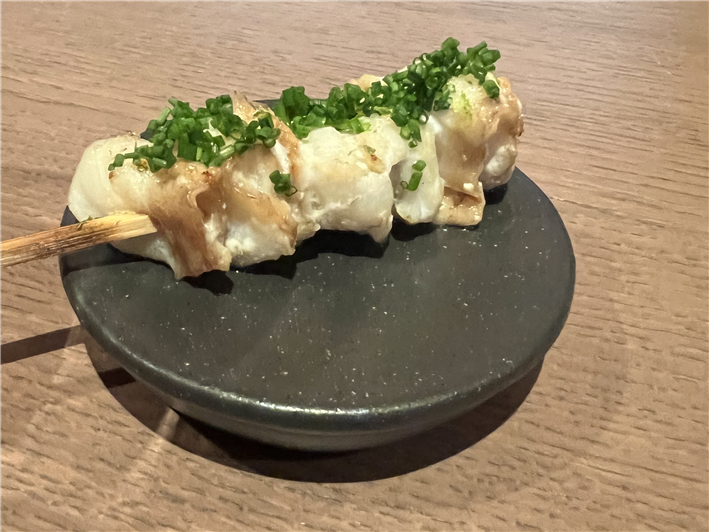
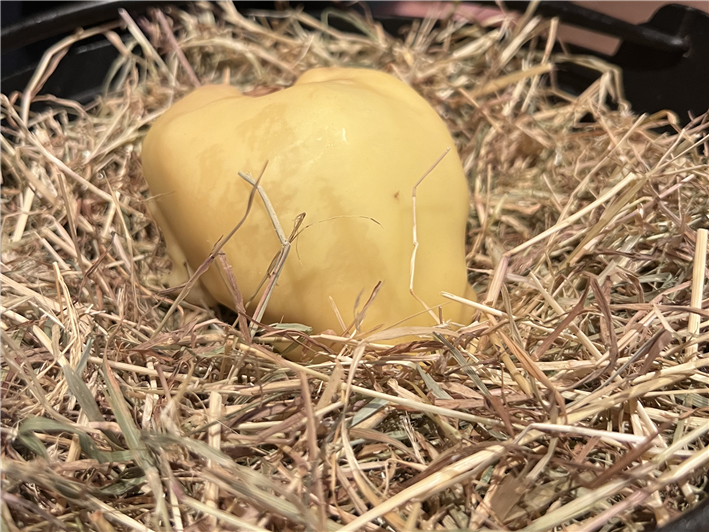
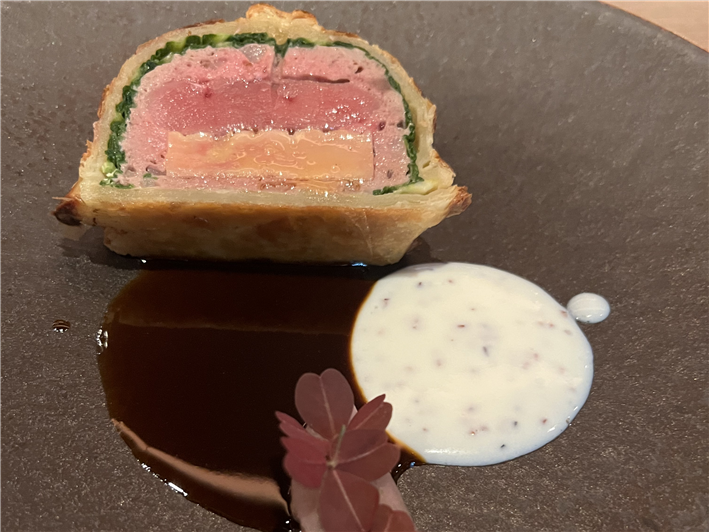
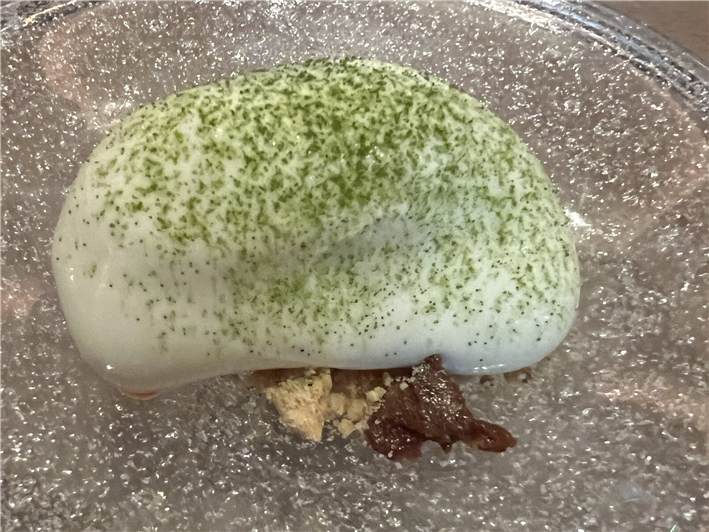



Add a comment
Thank you for submitting your comment, this will be checked and added to the website very soon.
User comments